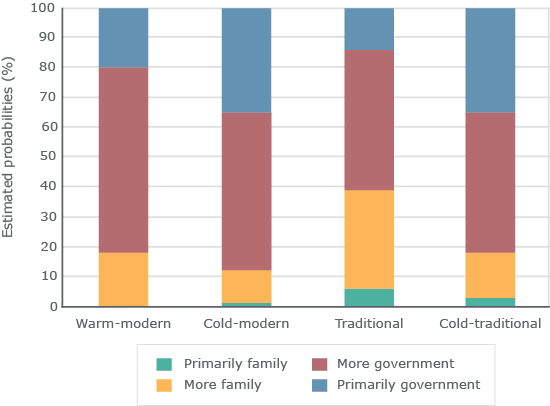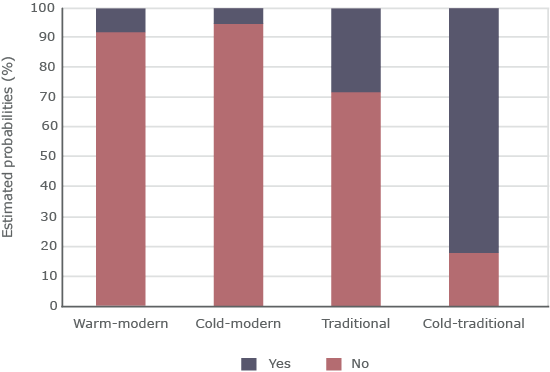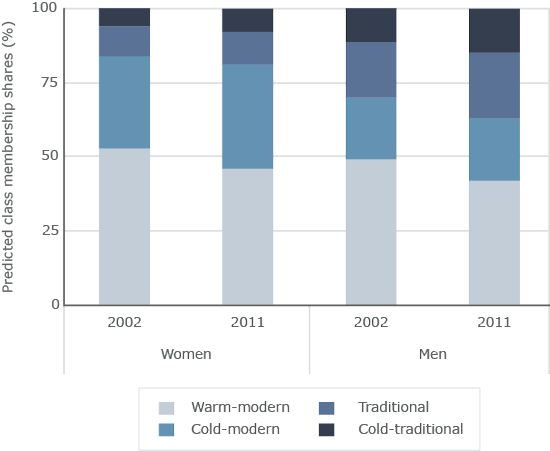Traditionally, Dutch long-term care arrangements were mainly provided by the government. But to limit costs, during the past few decades the Netherlands has been reforming its historically generous, public long-term care services. The reforms aimed to encourage people to be more active in caring for dependent relatives. Researcher Thijs van den Broek and his colleagues now show that despite the new policies to promote family engagement in care, care ideals in the Netherlands have shifted away from, rather than towards, the family having a prominent caring role.
Population ageing leads to a greater need for long-term care. Normative beliefs establish who should be the caregiver and the degree of care engagement for older people. To distinguish care ideals in the Netherlands, van den Broek, Pearl A. Dykstra and Romke J. van der Veen capture three dimensions of normative care beliefs simultaneously: the state, the family and the gender dimensions, and build a typology of four different care models.
Distinguishing care ideals in the Netherlands
Van den Broek and his colleagues found that four care ideals exist in the Netherlands (Figures 1 and 2). The most prevalent care ideal is the warm-modern in which people believe that care provision to the old must be provided through the engagement of both the family and the state. Within this class, people have a high probability (62%) to regard care as a shared task, but the government should have more responsibility than the family (Figure 1). Also, the members of this care ideal have a very high probability (92%) of supporting the idea that earning money is not only a task for men, suggesting that both men and women should be equally engaged in family caregiving (Figure 2).
The second class, following its prevalence pattern, is the cold-modern ideal, in which the probability of regarding care of the old as a primary task for the state is high (36%) and the probability of considering it as a partial (11%) or complete (1%) family duty is low. The likelihood that they support females in the work force is the highest amongst all care ideals (95%), confirming the equality of gender roles. The traditional class is the third care ideal identified by the authors. Here, the state is perceived as having few care responsibilities and members of this ideal have the highest probability to regard care as primarily (6%) or more of a task for the family (33%). They are unlikely to believe that men should be in charge of earning money (6%), which suggests that they tend to have a preference for equal involvement of men and women in unpaid care for family.
Van den Broek et al. named the fourth and less frequent care class in the Netherlands as cold-traditional ideal. This class follows a pattern that partially fits with the cold-modern care ideal, but is characterized by traditional gender role beliefs. Its members have a somehow high probability of regarding care as a responsibility of the government (35%) rather than of the family, and the highest probability of all classes to perceive earning money as a male task (82%).
From warm to cold care ideals
The study by Van den Broek et al. shows that in the early twenty-first century there has been a shift in care ideals in the Netherlands. While in 2002 the prevalent model was the warn-modern care ideal, in 2011 the cold-modern ideal of care was gaining importance. The care ideals shifted from considering that the family and state should jointly share care responsibilities to considering that care should be a large government duty with limited family support, both within a framework of egalitarian gender roles.
In fact, the probability for a typical higher educated woman to support a warm-modern care ideal was 53 per cent in 2002 and declined to a predicted probability of 46 per cent in 2011 (Figure 3). For a typical higher educated man, the probability of supporting a warm-modern care ideal decreased from 49 per cent in 2002 to 42 per cent in 2011. Concurrently, the probabilities of adhering to a cold-modern care ideal increased for both men and women.

Figure 1. Estimated class conditional response probabilities on responsibility care for the elder.
Notes: Estimated class population share: warn-modern (.40), cold-modern (.24), traditional (.20) and cold-traditional (.17).

Figure 2. Estimated class conditional response probabilities on male responsibility for earning money.
Notes: Estimated class population share: warn-modern (.40), cold-modern (.24), traditional (.20) and cold-traditional (.17).

Figure 3. Predicted probabilities of class membership shares in 2002 and 2011 for higher educated men and women.

*This PopDigest has received funding from the European Union's Seventh Framework Programme (FP7/2007-2013) under grant agreement n° 320116 for the research project FamiliesAndSocieties.
FamiliesAndSocieties (www.familiesandsocieties.eu) has the aim to investigate the diversity of family forms, relationships and life courses in Europe, to assess the compatibility of existing policies with these changes, and to contribute to evidence-based policy-making. The consortium brings together 25 leading universities and research institutes in 15 European countries and three transnational civil society organizations.